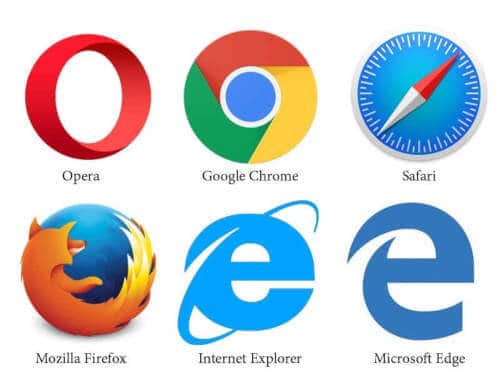The shortest definition of a web browser is the application we use to surf the web. Meanwhile, continue reading the article for more detailed information.
What is the Web Browser?
Web Browser (or Internet Browser) is an application that supports the client-side of the Hypertext Transfer Protocol (HTTP), the Internet protocol for the World Wide Web (WWW). You can use a Web browser, also called a “browser,” to access (browse) content published on a Web server. Each individual web page, image, and video is identified by a distinct Uniform Resource Locator (URL) enabling browsers to retrieve these resources from a web server and display them on a user’s device.

This content can be static, meaning it consists of ASCII text files formatted using Hypertext Markup Language (HTML). On the other hand, the content can be dynamic. In other words, it is generated on demand using client-side or server-side scripting in languages such as JavaScript or Microsoft Visual Basic, Scripting Edition (VBScript). Likewise, web browsers typically offer additional features to make browsing the Web easier and more profitable.
These features include the following:
- Toolbar buttons for navigating forward and backward through the tree of previously displayed pages, for stopping the download process, and for manually refreshing a page that loaded incompletely.
- Lists of favorites or bookmarks that store Uniform Resource Locators (URLs) of frequently accessed sites as well as tools for organizing and accessing those URLs.
- Options for specifying a default home page from which to begin browsing, a default search engine for searching the Web, and other default browsing options.
- Security options for handling such concerns as whether to allow scripts, ActiveX components, or Java applets to run on the browser.
- Facilities for displaying the underlying source code or HTML of a page, and even for editing and publishing Web content.
- Integration with other Internet software such as mail, news, or chat applications. Some Web browsers are packaged as stand-alone applications, while others are part of an overall suite of Internet tools that are integrated at various levels.
Web Browser History
The first graphical Web browser was developed in 1993 by a group of students headed by Marc Andreessen at the National Center for Supercomputing Applications (NCSA). This browser was known as Mosaic and was distributed free.
In 1994, Andreessen left NCSA to help found Netscape Communications, which developed the Netscape Navigator browser. The popularity of this browser, undoubtedly, helped foster the explosive growth of the Internet in the mid-1990s.
Microsoft soon entered the arena with its Internet Explorer browser, which has become the most widely used browser on the market. Starting with Windows 95, Microsoft began closely integrating Internet Explorer into its Windows operating systems, with the result that users running Windows can access Internet resources as easily as files on their own hard drives.
Firefox was born
In 1998, desperate to remain competitive, Netscape launched what would become the Mozilla Foundation to create a new browser using the open-source software model. This work evolved into Firefox, first released by Mozilla in 2004. Firefox reached a 28% market share in 2011.
Apple released its Safari browser in 2003. It remains the dominant browser on Apple platforms, though it never became a factor elsewhere.
And yet, the last major entrant to the browser market was Google. Its Chrome browser, which debuted in 2008, has been a huge success. It steadily took market share from Internet Explorer and became the most popular browser in 2012. To clarify, Chrome has remained dominant ever since.
Web Browser Privacy and Security Issues
During the course of browsing, cookies received from various websites are stored by the browser. Some of them contain login credentials or site preferences.

However, others are used for tracking user behavior over long periods of time, so browsers typically provide settings for removing cookies when exiting the browser. Finer-grained management of cookies requires a browser extension.
Security
Web browsers are popular targets for hackers, who exploit security holes to steal information, destroy files, and other malicious activity. However, browser vendors regularly patch these security holes, so users are strongly encouraged to keep their browser software updated. In addition, other protection measures are antivirus software and avoiding known-malicious websites.
Security exploits of browsers often use JavaScript – sometimes with cross-site scripting (XSS) – sometimes with a secondary payload using Adobe Flash. Moreover, security exploits can also take advantage of vulnerabilities (security holes) that are commonly exploited in all browsers.
How Web Browsers Work (Video)?
What “web browsers” are the most used by Internet users?
StatCounter statistics are directly derived from hits (not unique visitors) from 3 million sites using StatCounter totaling more than 15 billion hits per month. No weightings are used. These numbers are from July 2019.
| Web Browser | Market Share |
| Chrome | 71.05% |
| Firefox | 9.52% |
| Safari | 5.41% |
| Internet Explorer | 5.41% |
| Edge | 4.60% |
| Other | 4.43% |
Web References
- Internet Explorer
- Firefox
- Safari
- Microsoft Edge
- Google Chrome
- What is a Web Server?